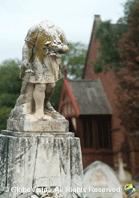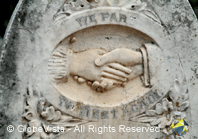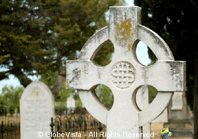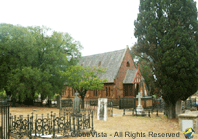 The East Perth Cemeteries are located on what was to be known as Cemetery Hill, the highest hill in central Perth. Soon after establishing the Swan River settlement, Lt Governor James Stirling ordered that all burials in the Colony were to take place at designated burial grounds and were to take place as soon as possible after sunrise or an hour before sunset.
The East Perth Cemeteries are located on what was to be known as Cemetery Hill, the highest hill in central Perth. Soon after establishing the Swan River settlement, Lt Governor James Stirling ordered that all burials in the Colony were to take place at designated burial grounds and were to take place as soon as possible after sunrise or an hour before sunset.
The area was surveyed by John Septimus Roe in 1829 as a potential location for the Swan River Colony’s main burial grounds and it was approved in November of the same year. The first person to be buried there was Private John Mitchell of the 63rd Regiment who died of dropsy in 1830.
The Cemetery contains over 800 stones scattered around 5 hectares. Some of the State’s most well known pioneers are buried in this cemetery such as John Septimus Roe (First Surveyor-General), Joseph Hardey (Farmer at Tranby House), Richard Roach Jewell (Colonial Architect), Sir Archibald Paull Burt (Chief Justice of Western Australia) and Lieutenant.Col.A.C. Clarke (Governor of the Colony) .The Church of England section is the oldest in the cemetery
Seven Cemeteries
 Originally the cemetery was designated for all the settlers of the colony, however in 1842 the Church of England sort to have their own area within the cemetery. In 1848 a lot was allocated and the Church of England cemetery was consecrated. As you can imagine it wasn’t long before other religious denominations were requesting the same. The cemetery was divided into areas for the Church of England, Roman Catholics, Wesleyan/Methodists, Presbyterians, Independent Christians (Congregationalists), Hebrews and the Chinese. Each religious group independently managed their cemeteries with the exception of the Chinese.
Originally the cemetery was designated for all the settlers of the colony, however in 1842 the Church of England sort to have their own area within the cemetery. In 1848 a lot was allocated and the Church of England cemetery was consecrated. As you can imagine it wasn’t long before other religious denominations were requesting the same. The cemetery was divided into areas for the Church of England, Roman Catholics, Wesleyan/Methodists, Presbyterians, Independent Christians (Congregationalists), Hebrews and the Chinese. Each religious group independently managed their cemeteries with the exception of the Chinese.
Both the Church of England and the Roman Catholics had their gravesites arranged in rows in descending order of status, a sure sign of the times when the class system was extremely important. The last burial in the cemetery was in 1924.
 In the 1930s the land, which had been controlled by the various church authorities, was relinquished and later declared a disused burial ground. The cemeteries came under the control of the State Gardens Board and were given a “A” Class Reserve title.
In the 1930s the land, which had been controlled by the various church authorities, was relinquished and later declared a disused burial ground. The cemeteries came under the control of the State Gardens Board and were given a “A” Class Reserve title.
In the late 1940s the Presbyterian, Jewish and Chinese sections of the cemetery, on the western side of Plain Street, were given to the Education Department. The memorials were removed and relocated in the cemetery before tennis courts were built over them.
As East Perth expanded, public roads and gardens were established and in many cases had to be built over sections of the cemeteries. Generally most memorials were saved and relocated however many unmarked graves were built over.
In 1967 the Cemeteries came under the control of the National Parks Authority and then in 1985 by the Department of Conservation and Land Management. the Cemeteries site was officially handed to the National Trust in 1994.
St Bartholomew’s Mortuary Chapel

St Bartholomew’s Mortuary Chapel was built by the Church of England in 1871 as a response to complaints about the difficulty in transporting coffins from St Georges Cathedral. It was considered a long way from the main colony and sand made it difficult for wagons to get to the cemetery on the hill. The Gothic Style was believed to be the work of Colonial Architect, Richard Roach Jewell. Click here for more about St Bartholomews Chapel.
Today, St Bartholomew’s is open to the public on Sundays where you can wander through the graves stones of some of the State’s earliest settlers and have a chat with the volunteers who provide a wealth of information about the site. For more information visit the National Trust WA Site.
